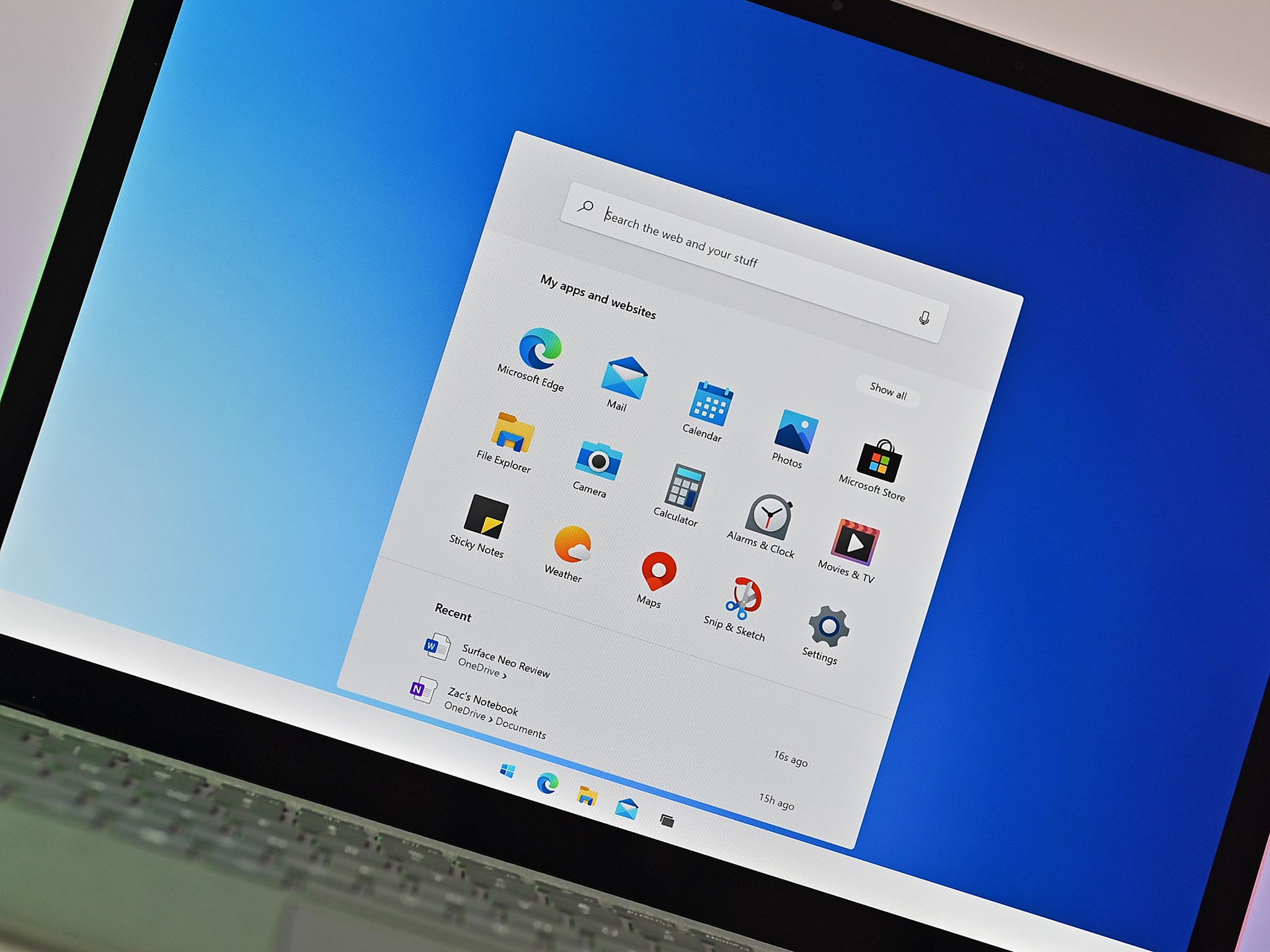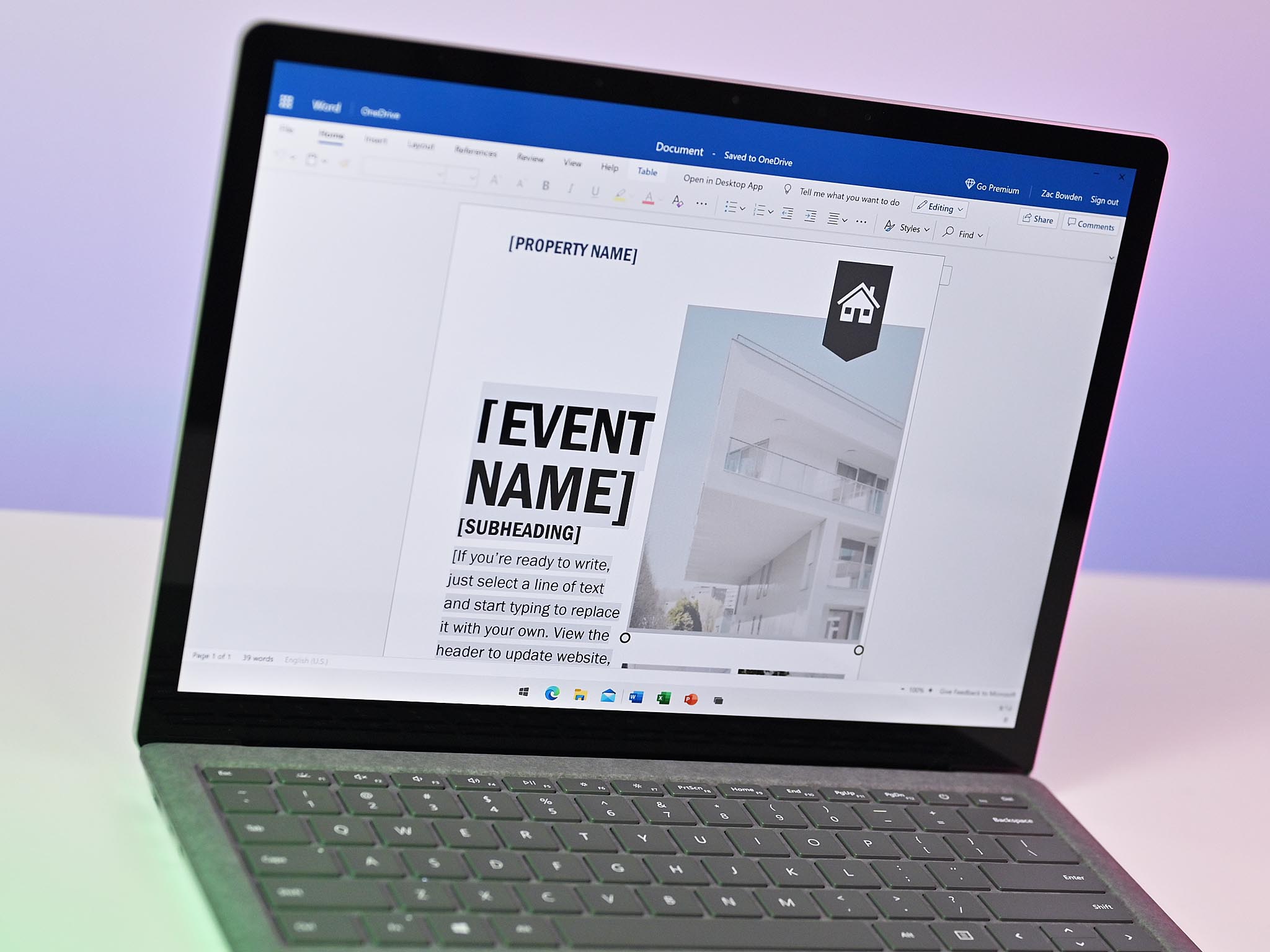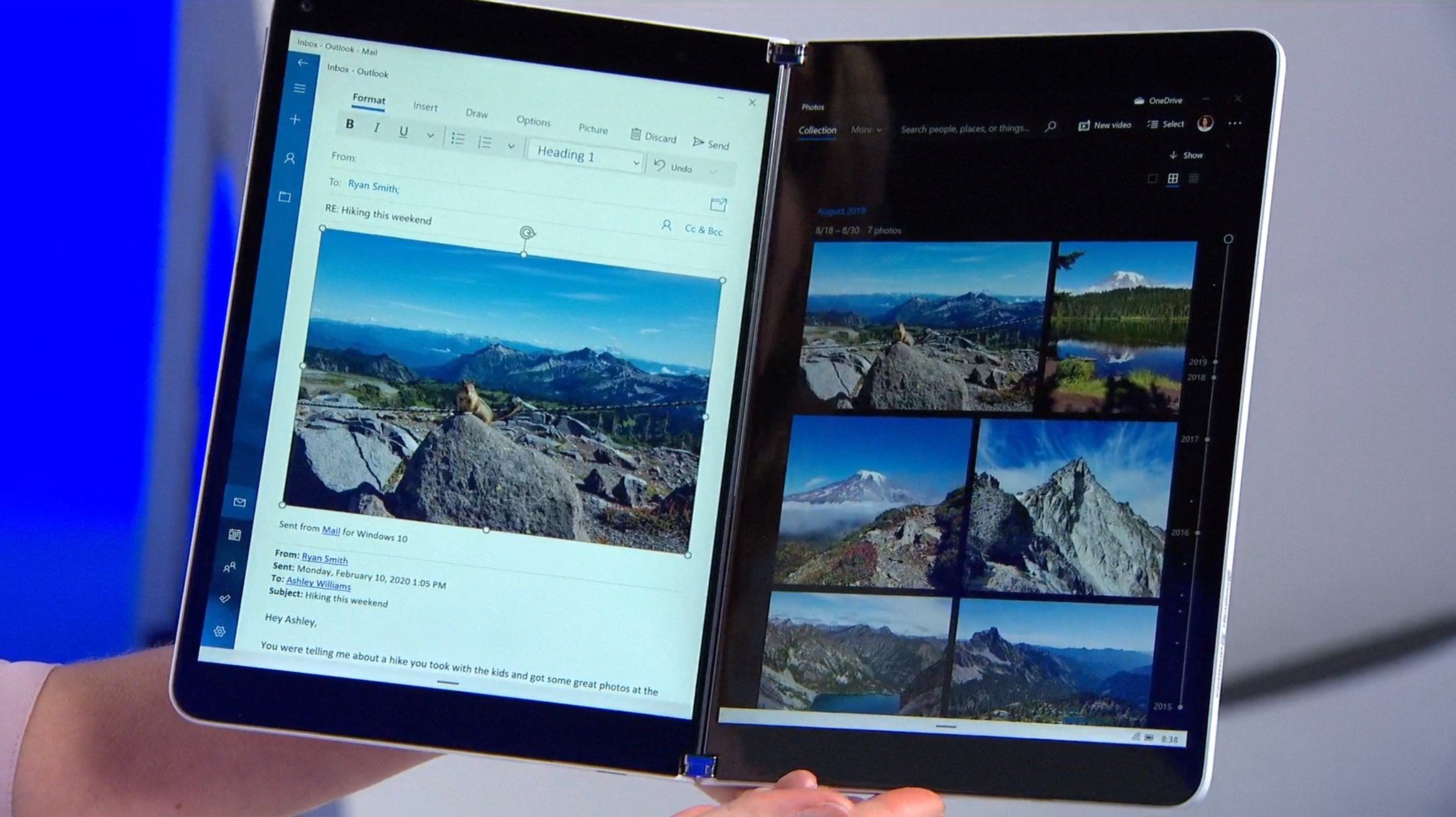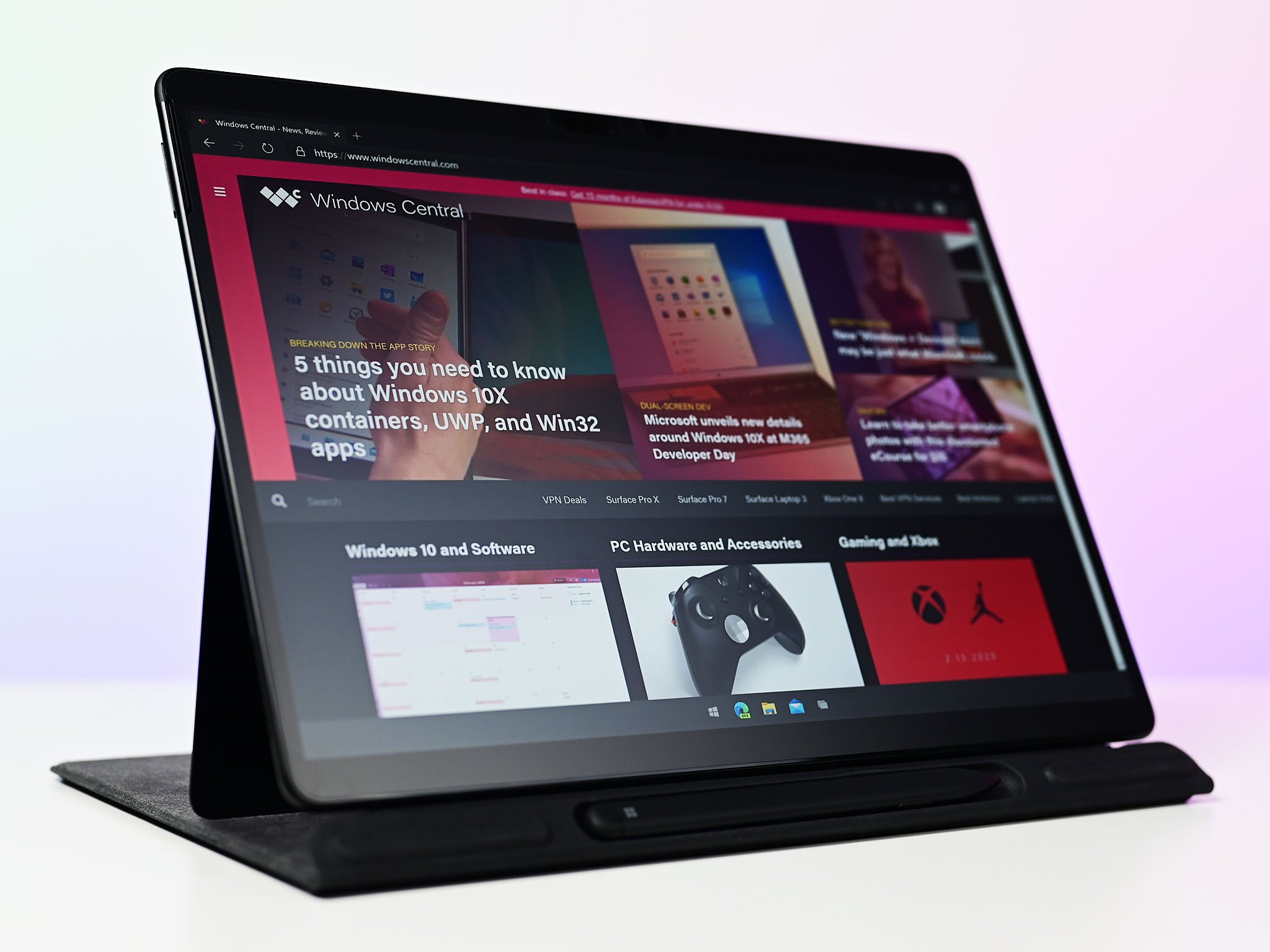Windows 10X takes aim at Chrome OS as Microsoft plans to ship without legacy app support.
What you need to know
- Microsoft is planning to launch Windows 10X without local Win32 support.
- Windows 10X will support streaming Win32 apps from the cloud instead.
- It will compete with Chrome OS on low-cost PCs in 2021.
Microsoft has remained tight-lipped regarding its plans for Windows 10X. After announcing a pivot from dual-screen to single-screen PCs, the company hasn't yet detailed what to expect from Windows 10X when it launches next year, including how Microsoft plans to position Windows 10X alongside its bigger brother Windows 10, now that they both run on the same form factors.
I know many have been itching for new information regarding Windows 10X, as have I, and I've been keeping a close eye on Windows 10X development internally. Up until recently, not much had changed in the Windows 10X builds, but in the last couple of weeks I've had several trusted sources come forward to confirm the removal of a significant feature.
VAIL, the technology Microsoft uses to virtualize legacy Win32 programs on Windows 10X via containers, has been removed from the latest internal builds of the OS. I'm told that this is a deliberate change as the company moves to reposition Windows 10X as a platform designed to compete at the low-end, head-to-head with Chromebooks with web apps front and center.
The pivot to single-screen PCs is what drives this change. Originally planned as an OS for flagship premium PCs in the foldable space, Windows 10X will now be launching at the very other end of the spectrum, on low-cost tablets and laptops designed for the education and enterprise markets.
Microsoft's local Win32 app layer will not be present when these low-cost PCs launch with Windows 10X next year. Users will be able to run UWP apps and web apps powered by Microsoft Edge, but not legacy Win32 programs. Web apps will be the driving factor for app availability on Windows 10X, just like Chrome OS.
Keeping Windows 10X 'lite'
I'm told that the big reason why VAIL won't be part of Windows 10X on these low-cost PCs is because of app performance and battery life. These low-end devices just aren't powerful enough to virtualize legacy Win32 applications on top of Windows 10X without slowing things down, which defeats the purpose of Windows 10X being a modern, lightweight version of Windows.
However, Microsoft knows that shipping a product called "Windows" without some form of legacy app compatibility is suicide. As such, Microsoft is planning to ship Windows 10X with support for legacy app streaming using the cloud. My sources have confirmed this technology uses tech similar to the already available Windows Virtual Desktop, an enterprise service that lets PCs run applications installed in the cloud on client PCs as if they were native.
Microsoft will be going after the Chrome OS market in a big way with this change. It will be targeting the people who only really use web apps in their daily workflow. I'm told Microsoft will be pushing the web versions of apps like Office, Skype, and Teams instead of their Win32 or UWP counterparts to really drive home the idea that Windows 10X is a web-first OS.
Interestingly, I'm told that with the removal of VAIL, Microsoft can now proceed with Windows 10X on ARM powered PCs in addition to Intel. Originally, VAIL was the reason why Microsoft was limiting Windows 10X to Intel-based PCs, but with VAIL gone, that limitation is lifted. We'll have to see if any ARM based PCs will be ready when Windows 10X launches next year.
What does this mean for dual-screen PCs?
My sources say that Microsoft still wants to launch dual-screen PCs eventually. With the ongoing pandemic and current economic conditions, Microsoft doesn't know when this will be. Launching an experimental, premium PC market in these global conditions is risky, and Microsoft doesn't want to launch Surface Neo until these conditions improve.
That said, I'm told that when Microsoft is ready to launch dual-screen PCs, VAIL should be included. VAIL isn't launching on low-cost PCs because of performance issues, but I'm told these performance issues are less of an issue on devices with more powerful specs, like many of the dual-screen and foldable PCs that are in the works.
Microsoft is essentially planning to sandwich both ends of the Windows market with Windows 10X. You will see Windows 10X at the very low-end, and at the premium high-end with experimental form factors like foldable PCs. I'm told you likely won't see Windows 10X on traditional flagship PCs like the Dell XPS or HP Spectre line anytime soon. Outside of the low-end and experimental high-end, Microsoft wants OEMs to continue using legacy Windows 10.
In the last few months, Microsoft internally has "refocused" its efforts on legacy Windows 10. I'm told Microsoft is planning significant updates to the Windows 10 user interface and experience in the next year or so, but I'm still digging for information about that. Microsoft has already confirmed to Windows Central that it plans to bring some of Windows 10X's innovations to Windows 10, and I would bet that includes some of Windows 10X's modern interface changes.
My sources say that Microsoft is planning to reach RTM status with Windows 10X in December and begin launching the first low-cost Windows 10X PCs in the first half of 2021. Microsoft will likely use the Surface Go 3 to showcase Windows 10X, as it would look bad for Microsoft to launch a new version of Windows without its own hardware to go along with it.
Coming full circle
If you've been following along with Windows 10X's development since before the product was officially unveiled, you'll know that reports originally described Windows 10X (codenamed Santorini and Windows Lite at the time) as a Chrome OS competitor. This pivot to single-screen PCs that takes aim at Chromebooks isn't a recent idea; it's been part of the plan since the very beginning.
At some point between those initial plans and Windows 10X's unveiling in October 2019, Microsoft decided to halt its Chromebook competitor plans and focus on the premium dual-screen market instead. A few months later, once the pandemic hit, Microsoft decided to go back to that original plan, launching Windows 10X on PCs that compete with Chromebooks first instead.
Of course, these plans could change again, but assuming they don't, what are your thoughts on Microsoft's repositioning of Windows 10X without local Win32 app support? Let us know in the comments.











0 comments:
Post a Comment